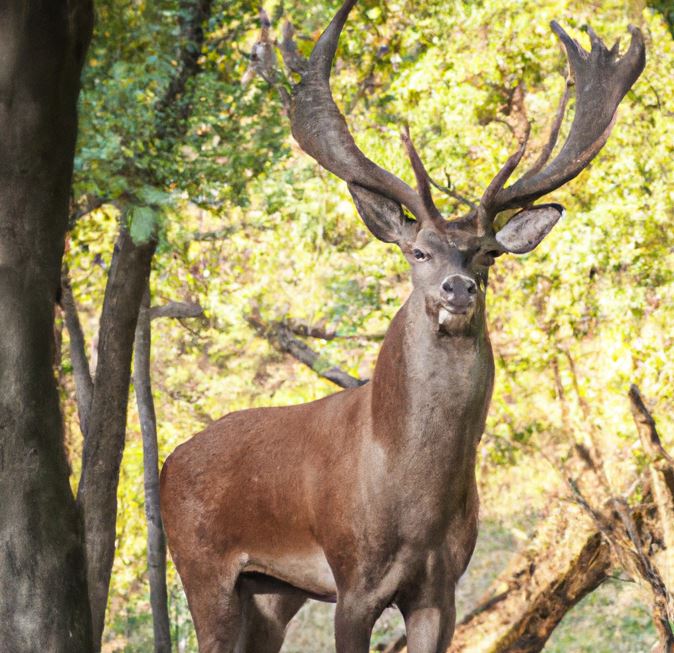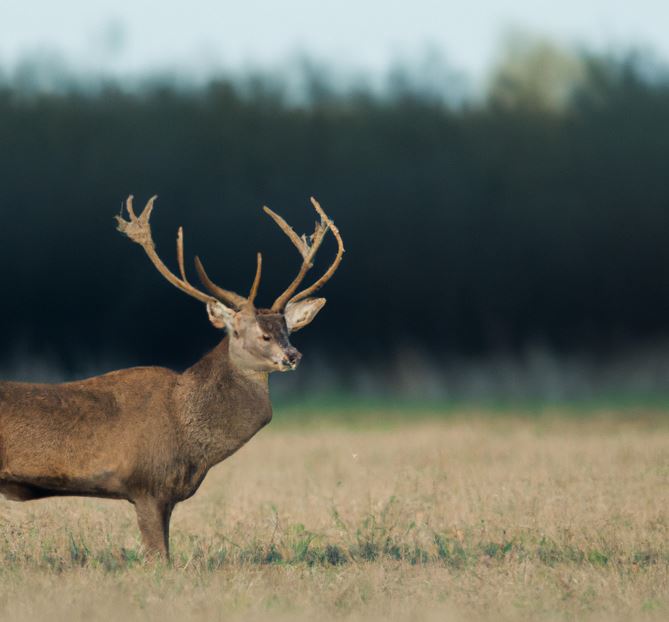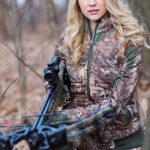Deer hunting is a thrilling and exciting activity that requires skill and precision. Proper shot placement is crucial to ensure a successful and ethical hunt. In this guide, we will discuss the different deer shot placement techniques, including their advantages and disadvantages.
Anatomy of a Deer Before we get into the specifics of where to aim, let’s first understand the anatomy of a deer. A deer’s vital organs are located in the chest cavity, which is protected by the ribcage. These organs include the heart, lungs, and major blood vessels. Hitting these organs with a well-placed shot will result in a quick and humane kill.

Where to Shoot a Deer with a Gun
Best Places to Shoot a Deer Now that we know the anatomy of a deer, let’s look at the best places to aim for a successful shot.
Heart Shot:
The heart shot is the most common and effective shot placement for deer. It involves aiming at the deer’s heart, located behind the shoulder. A heart shot results in quick death and minimizes the risk of the deer running away. However, the heart is a small target, and a slight miss can lead to a gut shot, which is not only unethical but also challenging to track.
Lung Shot:
The lung shot involves aiming at the deer’s lungs, located behind the shoulder and above the heart. It is another effective shot placement that results in quick death and minimal risk of the deer running away. The lungs are a larger target compared to the heart, making it easier to hit. However, a slight miss can lead to a shoulder hit, which can damage valuable meat.
Neck Shot:
The neck shot involves aiming at the deer’s spine, located at the base of the neck, just behind the head. It is a high-risk shot placement that requires excellent precision. A successful neck shot results in instant death, but a miss can lead to severe injury or a spine hit, which can paralyze the deer and require a finishing shot.
Head Shot:
The head shot involves aiming at the deer’s skull, just behind the eye socket. It is the most challenging shot placement and requires the highest level of skill and precision. A successful head shot results in instant death, but a miss can lead to a severe injury, leaving the deer to suffer.
Abdominal Shot:
The abdominal shot involves aiming at the deer’s abdomen, just behind the rib cage. It is the least recommended shot placement and should be avoided at all costs. An abdominal shot can result in a gut shot, which is not only unethical but also difficult to track. The deer may run away and suffer for days before dying.
Conclusion: Deer shot placement is an essential aspect of hunting that requires proper technique and precision. The heart and lung shots are the most recommended shot placements, resulting in quick death and minimal suffering. The neck and head shots require a higher level of skill and precision and should be attempted by experienced hunters only. The abdominal shot should be avoided at all costs, as it can result in a gut shot and prolonged suffering. We hope this guide helps you make ethical and successful shots during your next deer hunt.

FAQs
- What caliber gun is best for deer hunting?
A: The best caliber gun for deer hunting depends on several factors, including the type of terrain you’ll be hunting in, the size of the deer, and your personal preferences. Generally, a .243 or .270 caliber rifle is sufficient for most deer hunting. - How far away should I be from the deer when shooting?
A: The ideal shooting distance depends on your skill level, the type of gun you’re using, and the conditions in which you’re hunting. In general, most hunters aim for a distance of around 100 yards. - What time of day is best for deer hunting?
A: Deer are most active during the early morning and late evening, so these are generally the best times for hunting. - Do I need a special license to hunt deer?
A: Yes, you will need a hunting license and a deer tag to hunt deer legally. In the United States, for example, deer hunting is regulated by state wildlife agencies, and hunters are required to obtain a hunting license and a deer tag for each animal they plan to hunt. Some states also require hunters to take a hunter safety course before they can obtain a hunting license.Outside of the United States, regulations may vary, but most countries require hunters to obtain a license or permit before hunting deer or other game animals. It’s important to check with your local wildlife agency or hunting department to find out what specific licenses and permits are required in your area, as well as any rules or restrictions that may apply to hunting deer or other game animals.
Where to Shoot a Deer with a Bow

Before discussing where to aim on a deer, it is essential to have a basic understanding of the animal’s anatomy. The vital organs of a deer are located in the chest cavity, including the heart and lungs. These organs are protected by the ribcage, which extends from the spine to the sternum. The spine runs through the center of the deer’s body, and the neck connects to the head and shoulders.
Shot Placement
When aiming to take down a deer with a bow, shot placement is crucial. A well-placed shot ensures a quick and humane kill and reduces the risk of the animal suffering unnecessarily. The most effective shot placement is the heart and lung area, which is located in the deer’s chest cavity.
Broadside Shot
A broadside shot is the most common shot placement for bow hunters. This shot requires the deer to be standing perpendicular to the hunter, presenting a broadside view of its chest cavity. When taking a broadside shot, aim for the center of the deer’s chest, just behind the shoulder. This shot will hit the heart and lungs, resulting in a quick and humane kill.
Quartering Away Shot
A quartering away shot is another effective shot placement for bow hunters. This shot requires the deer to be standing at an angle, with its rear end facing the hunter. When taking a quartering away shot, aim for the opposite shoulder, just behind the ribcage. This shot will hit the lungs, resulting in a quick and humane kill.
Quartering To Shot
A quartering to shot is a challenging shot placement that requires precise aiming. This shot requires the deer to be standing at an angle, with its front end facing the hunter. When taking a quartering to shot, aim for the opposite shoulder, just behind the shoulder blade. This shot will hit the heart and lungs, resulting in a quick and humane kill.
Tips for Successful Shot Placement
To ensure successful shot placement, bow hunters should take the following tips into consideration:
- Wait for the right shot: Patience is key when bow hunting. Wait for the deer to present a clear shot before taking aim.
- Practice your aim: Bow hunters should practice their aim regularly to ensure they are proficient and accurate.
- Use the right equipment: Bow hunters should use high-quality equipment, including arrows, broadheads, and a bow that is appropriate for their skill level.
- Be aware of the deer’s behavior: Deer are skittish animals that can sense danger. Bow hunters should be aware of the deer’s behavior and movements to ensure they are not detected.
- Take ethical shots: Bow hunters should only take shots that are ethical and ensure a quick and humane kill.
FAQs:
Q1: How can I tell if I hit the deer in the right spot?
A: You can tell if you hit the deer in the right spot by looking at the placement of the arrow. If the arrow hits the heart and lung area, the deer will typically run a short distance before collapsing.
Q2: Can I still take down a deer if I hit it in the wrong spot?
A: If you hit the deer in the wrong spot, it can still be taken down, but it may take longer for the animal to die. It is important to track the animal and ensure it does not suffer unnecessarily.
Q3: What is the best time of day to hunt deer with a bow?
A: The best time of day to hunt deer with a bow is during the early morning or late afternoon when deer are most active.
Q4: What is the effective range for bow hunting deer?
A: The effective range for bow hunting deer varies depending on the skill of the hunter and the equipment used. Generally, the effective range is between 20 and 40 yards.



1 thought on “Where to Shoot a Deer With Gun or Bow”